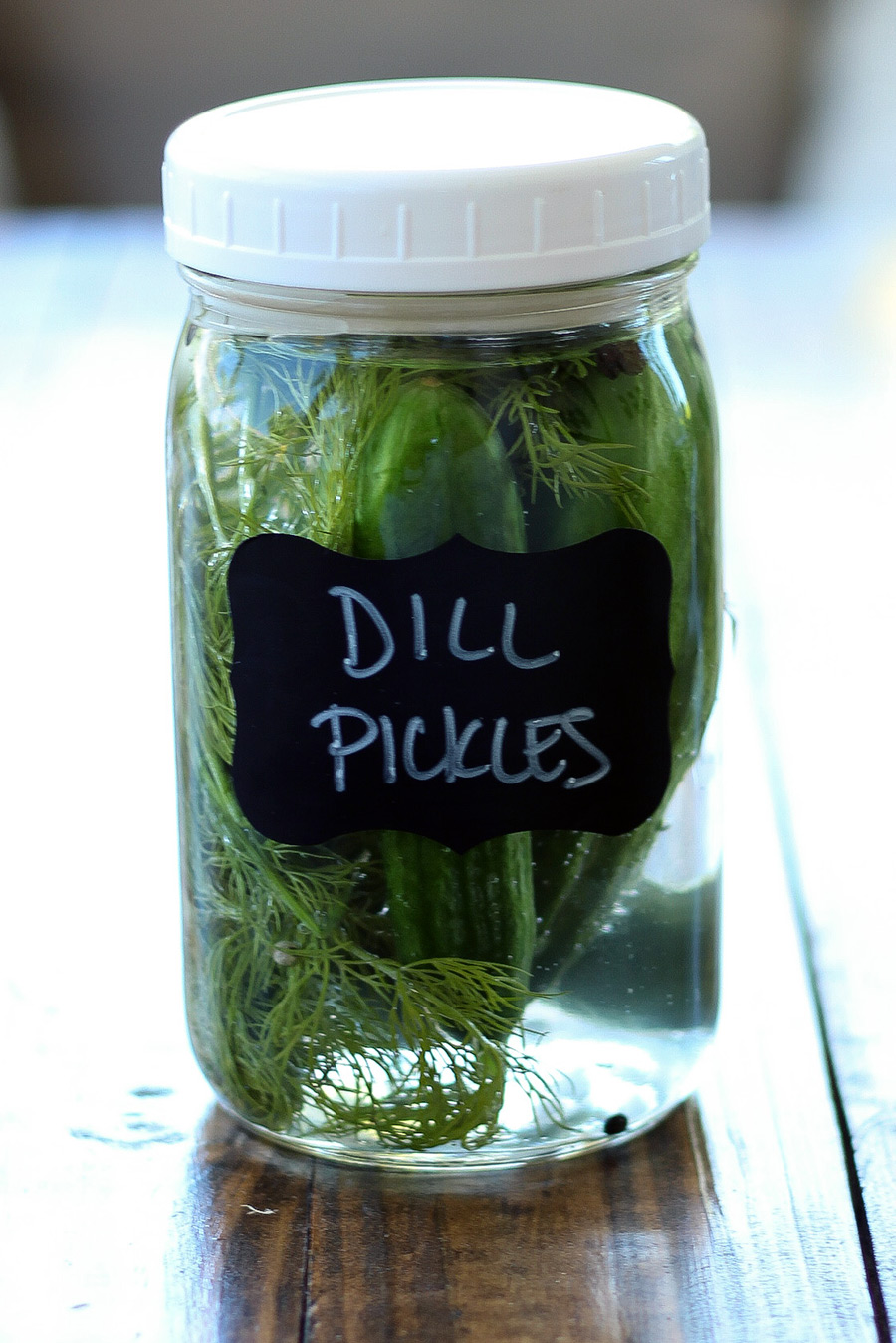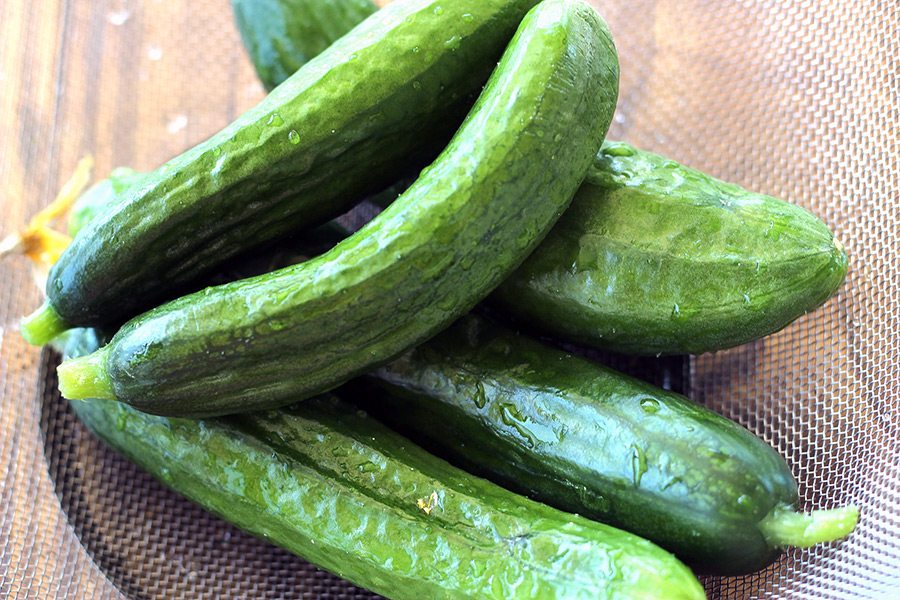
Avoid mushy pickles forever by following my tips for crunchy pickles.
Fermenting cucumbers is very challenging compared to other vegetables, like carrots or green beans, because cucumbers contain a high amount of water making them subject to fast decomposition. Cucumbers easily become mushy when fermented, which is gross to most people, including me.
So, how do you ferment cucumber pickles so they stay crunchy? Here are my tips for crunchy pickles.

Use fresh, firm, small cucumbers
The cucumbers should have no soft spots and should not look wrinkly. Fresh picked from your garden or the farmers’ market work best. I find that using small cucumbers, such as Persian cucumbers make the crunchiest pickles. The traditional kirby cucumbers tend to get mushy on the outside by the time the whole cucumber is fermented.
Add tannins to your brine
Add a fresh grape leaf, oak leaves, cherry leaves, horseradish leaves, a tea bag, loose leaf tea, green banana leaf, or bay leaves to your brine. The tannins prevent the cell walls from breaking down, leaving a crunchy pickle.
Sea Salt
Sea salt contains minerals, like calcium and magnesium that help reinforce the cell walls during fermentation, keeping them crispy.
Remove the flower buds from the ends of the cucumbers
The flowers have an enzyme that breaks down the cucumbers faster causing them to be mushy.
Soak the cucumbers in ice water before fermenting
Soak them for 1-2 hours before you add them to the brine. They will get nice and firm, which will help them stay crunchy during fermentation.
If it’s hot, ferment for less time
If the temperature is over 75 degrees, ferment them for less time. Check them in 3 days to see if they’re ready. The hot weather will make them ferment faster, which leads to mushy pickles. In cold weather they can ferment for longer.
Taste them often
Cut off a small slice and taste to see if they’re ready. Do this often, because it only takes 1 day for them to change to a mushy pickle. Store them in the refrigerator at the first sign of softening.
Know when they’re ready
Pickles turn from a bright green to an olive green when they’re ready. The inside will become more translucent and the brine will be cloudy.
https://uploads.disquscdn.com/images/5e7e3394dd5d56be3f7ff40056a4ad2769a70dc95b6329fadcd775bd76a189a3.jpg Some great tips here, worthy to be printed and added to my ferm folder. Yellow “ball” is a lemon cuke I grew (late) as an experiment. Haven’t tasted a ferm one yet. Subscribed and following you. Cheers,Bob https://uploads.disquscdn.com/images/ada8cb686589a9bce7359dd6ff32c38474c63520b4729851d313391ae0b7f85d.jpg
Thanks for sharing Bob! Looks great :)
I use loose leaf green tea and cut off the blossom ends, my pickles are always crunchy. If you are doing whole pickles, run a skewer thru the pickle too so whatever seasoning you are using will get in.